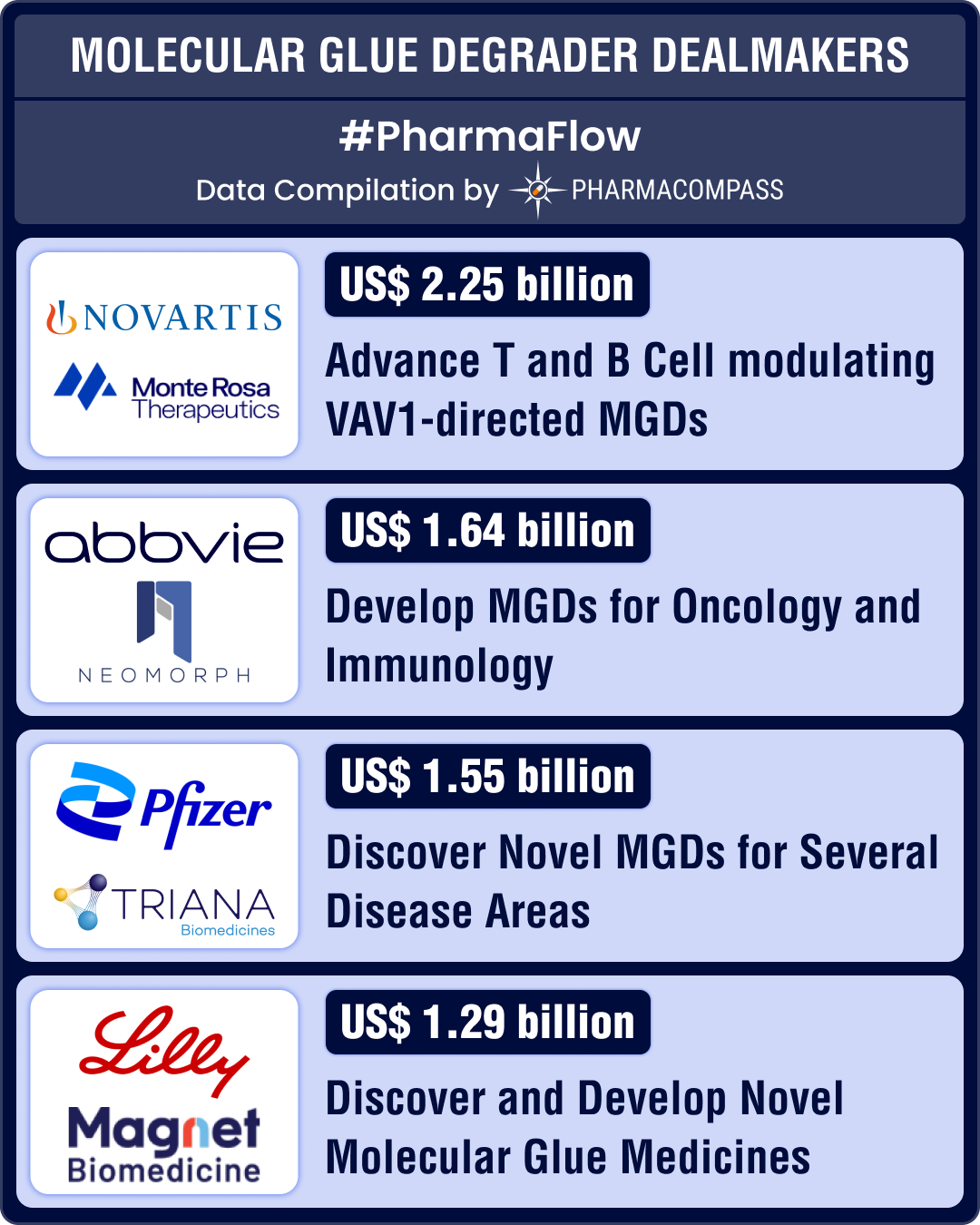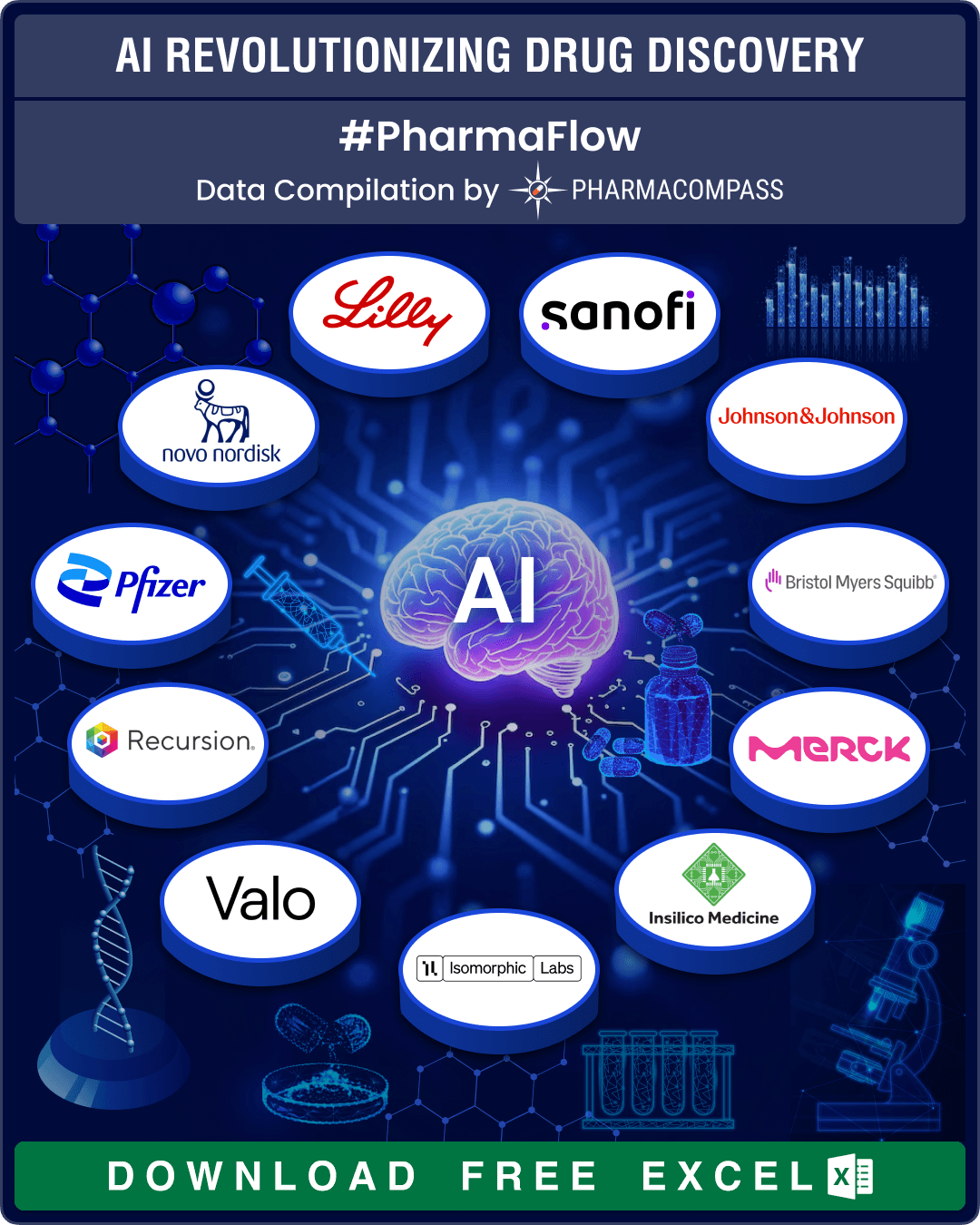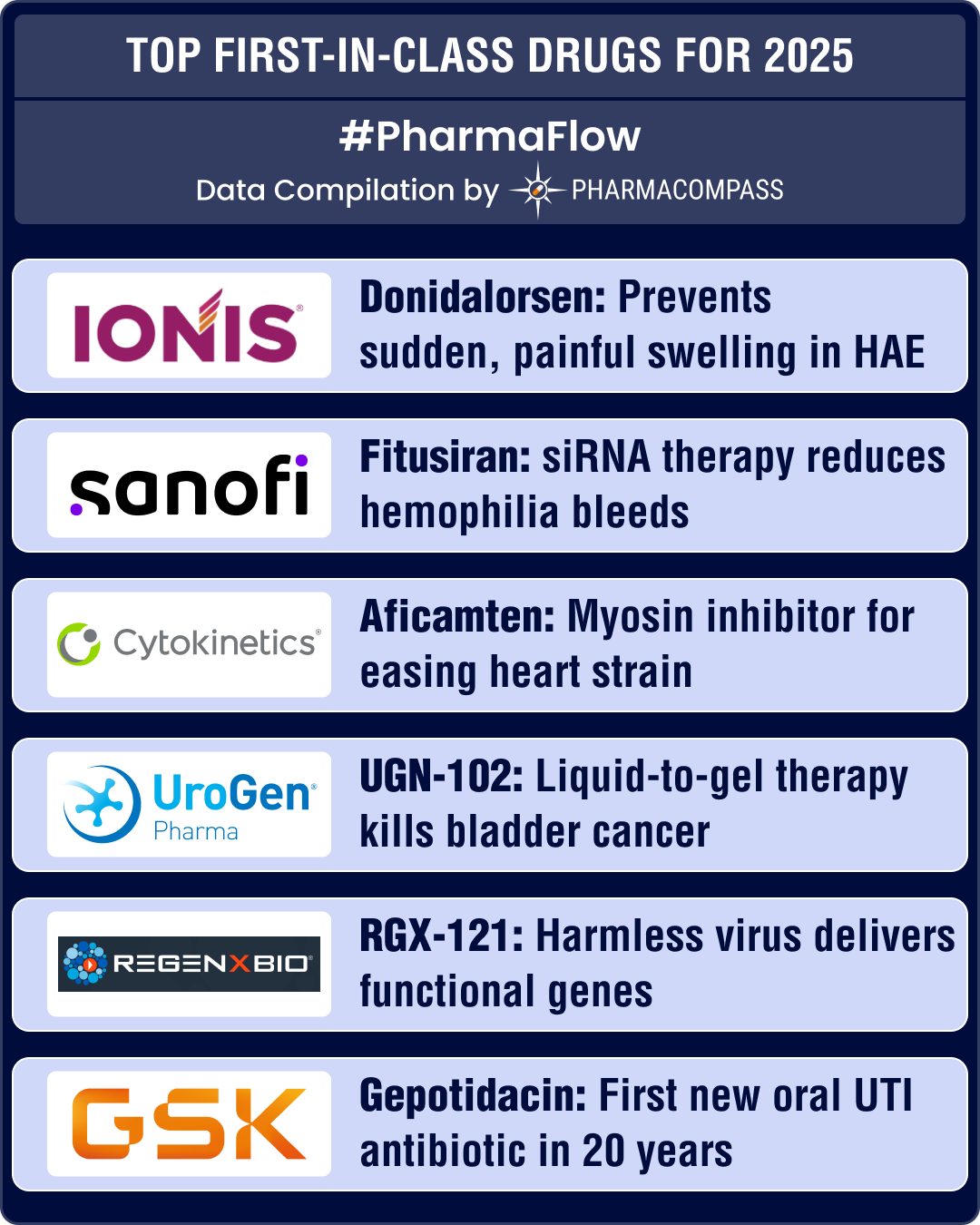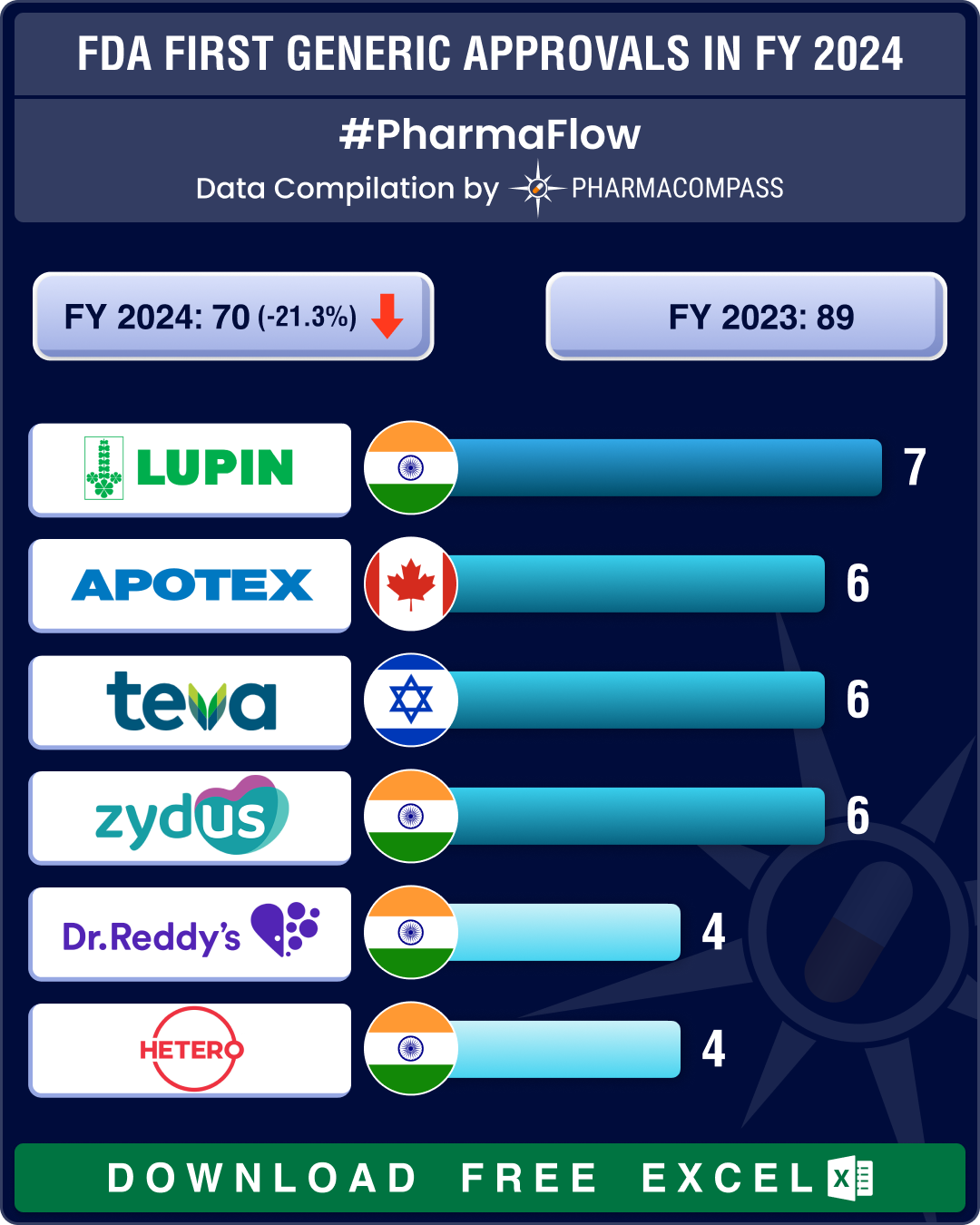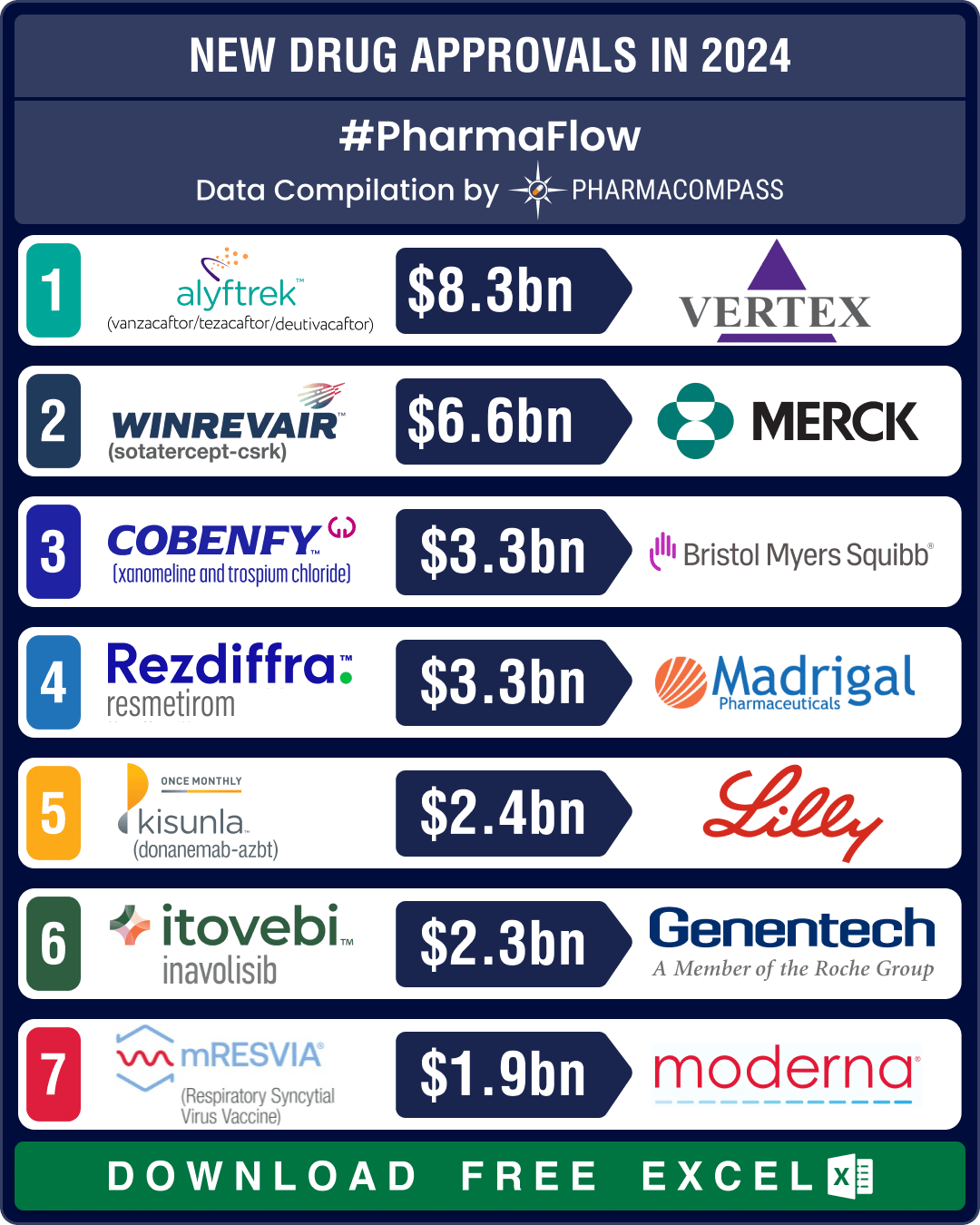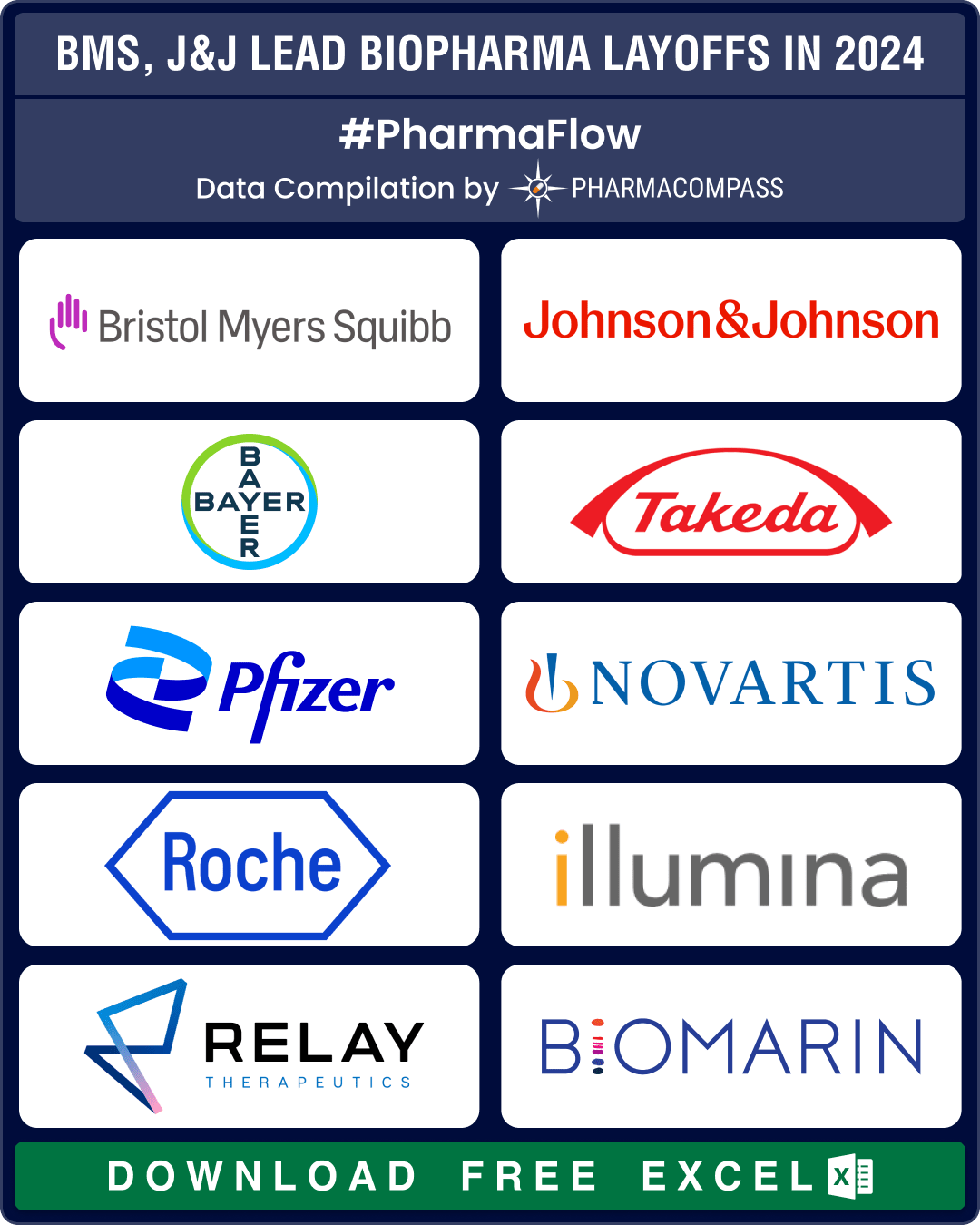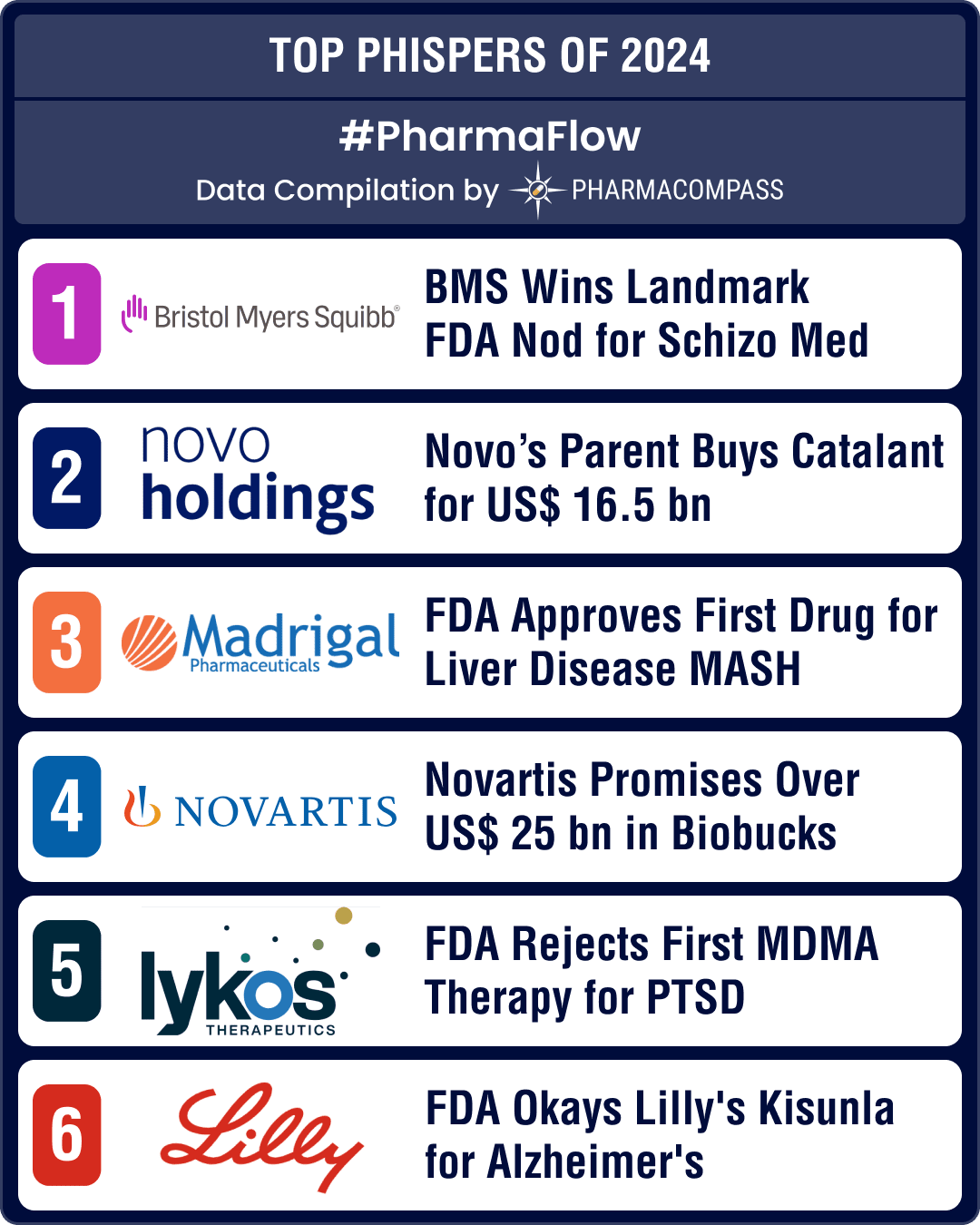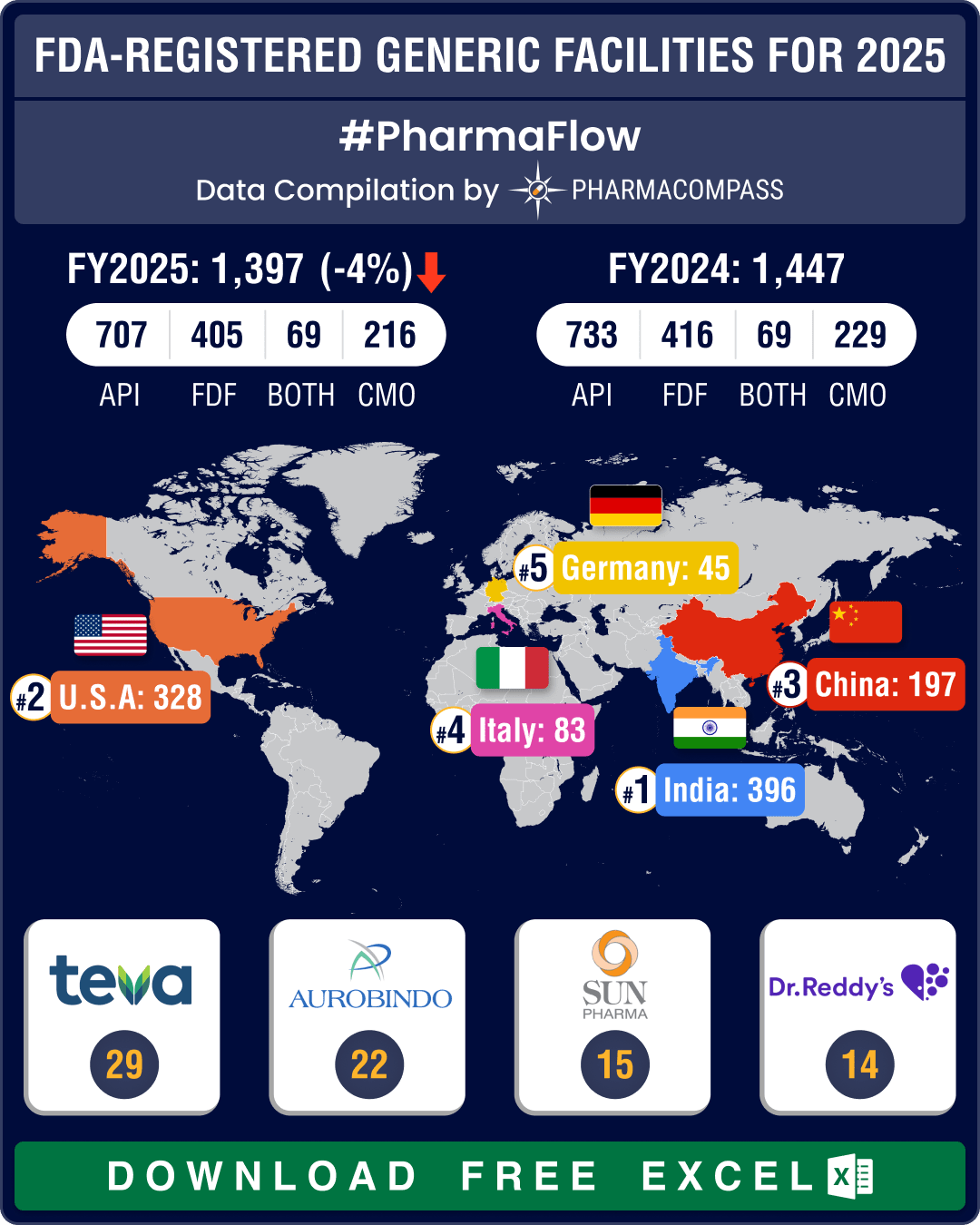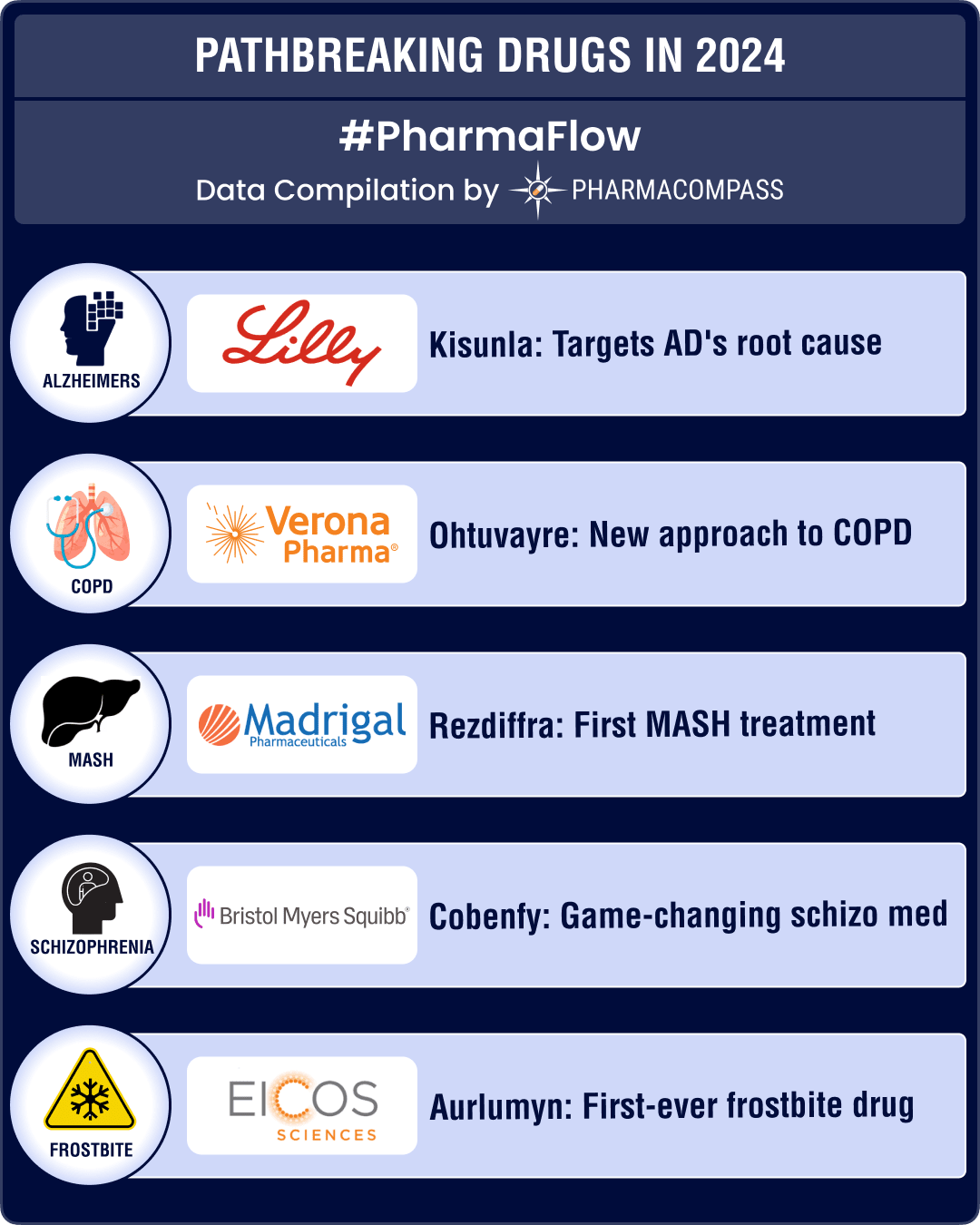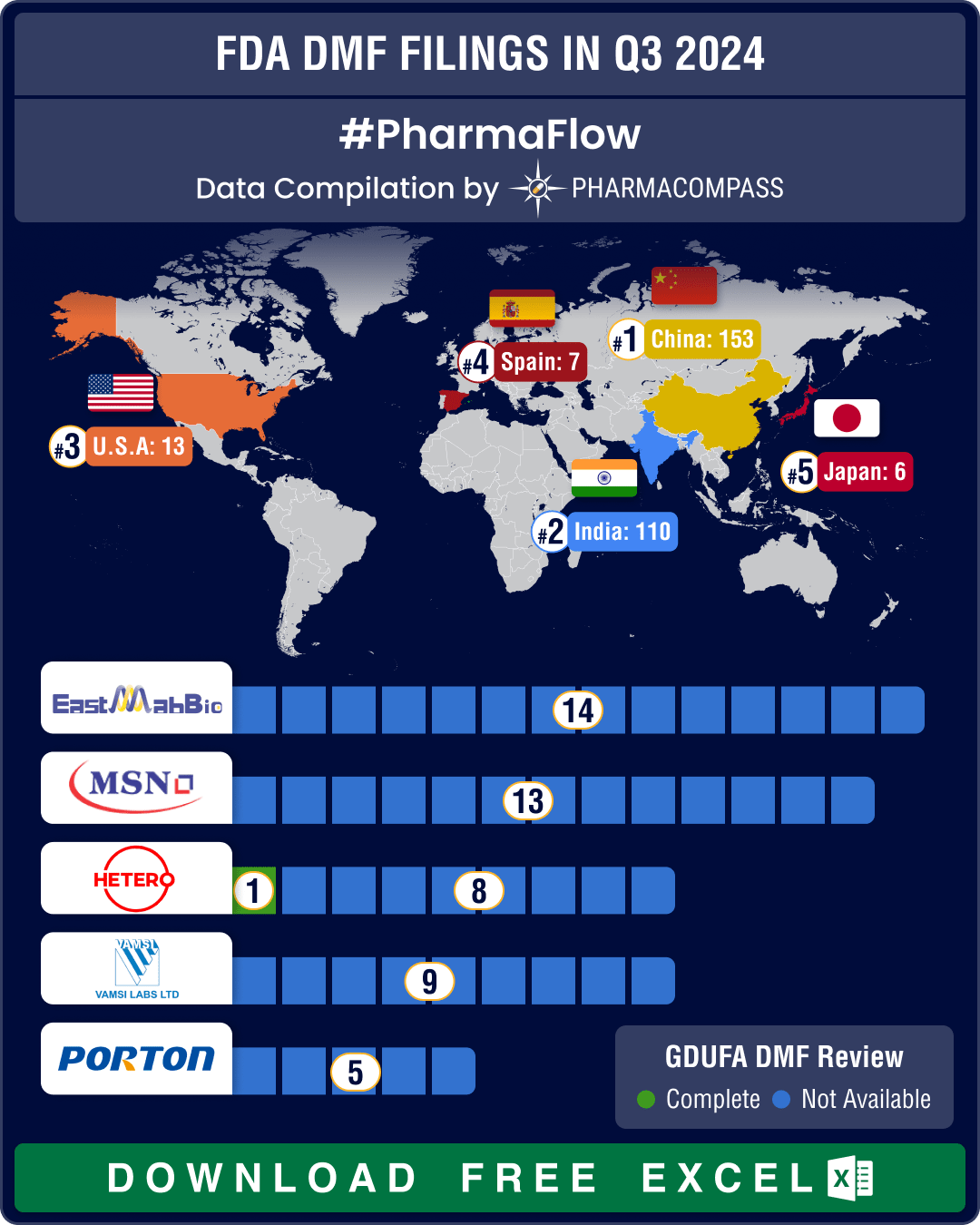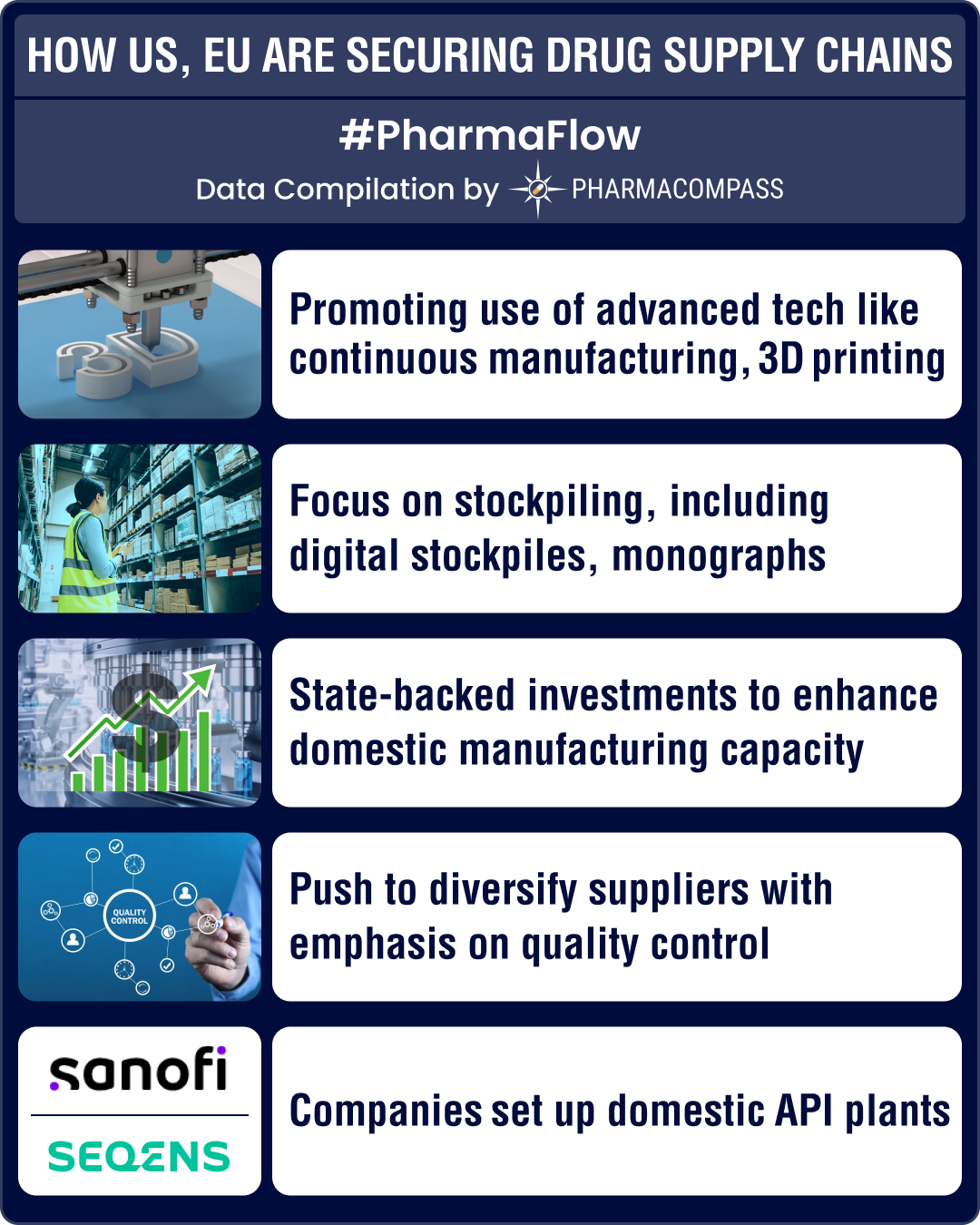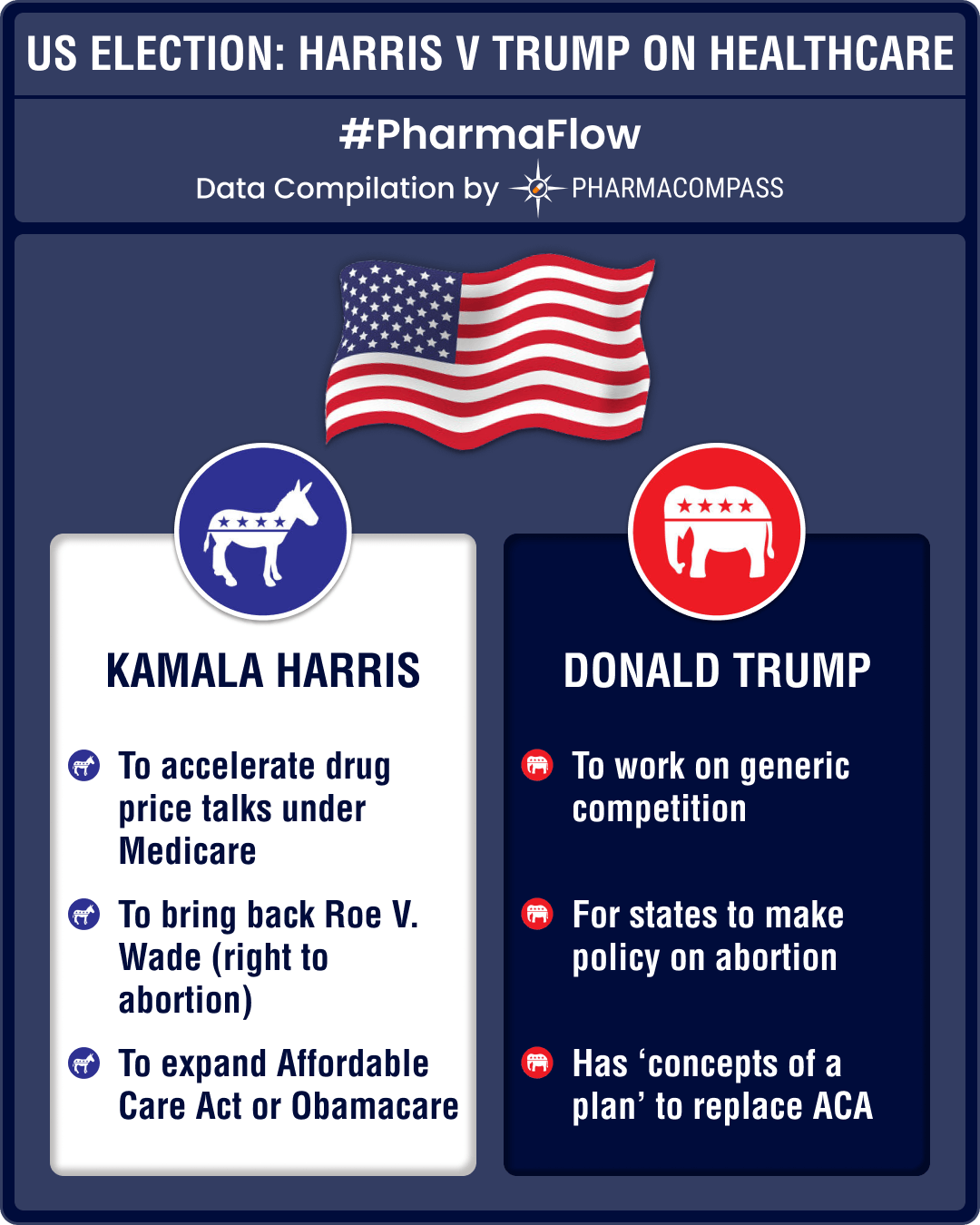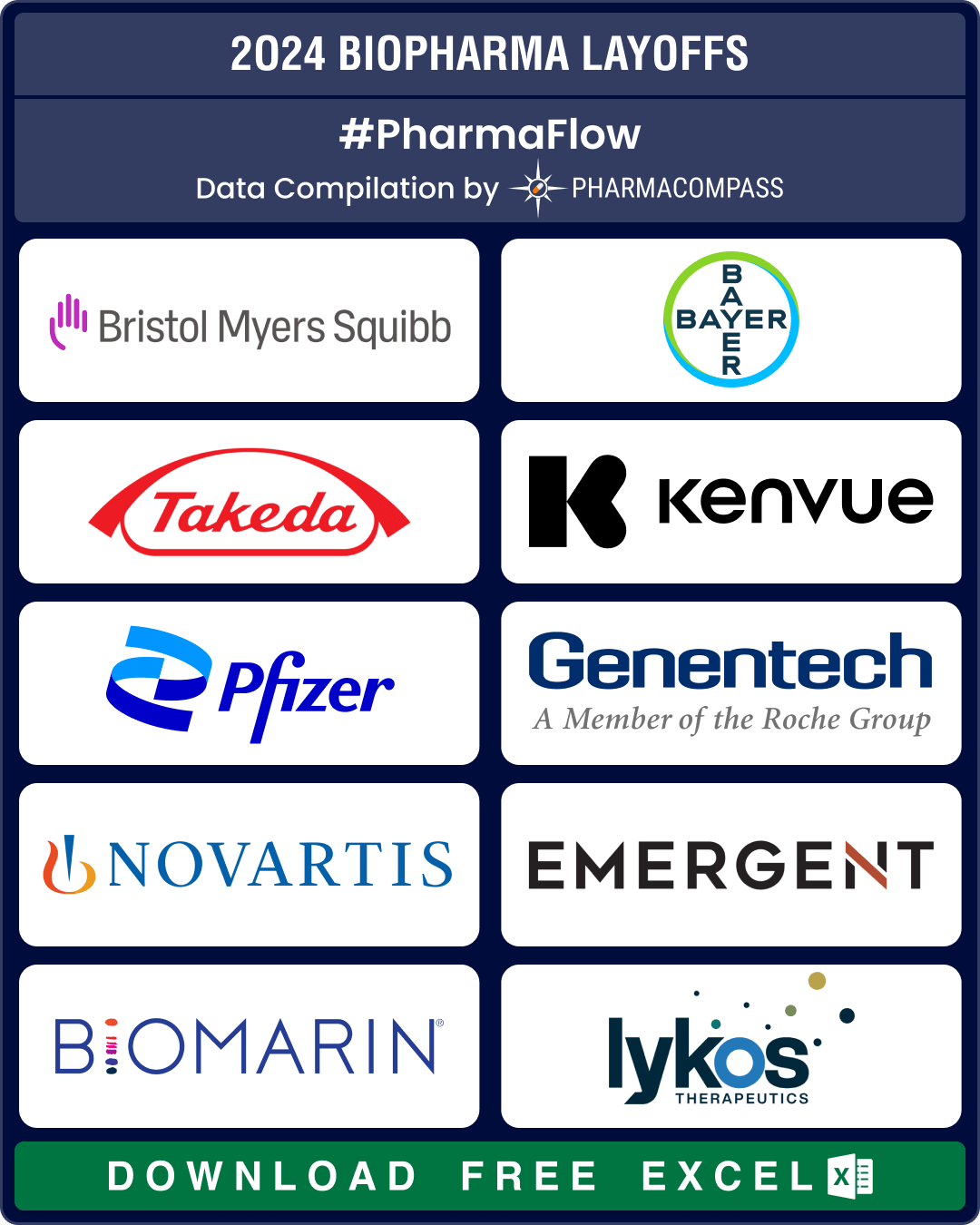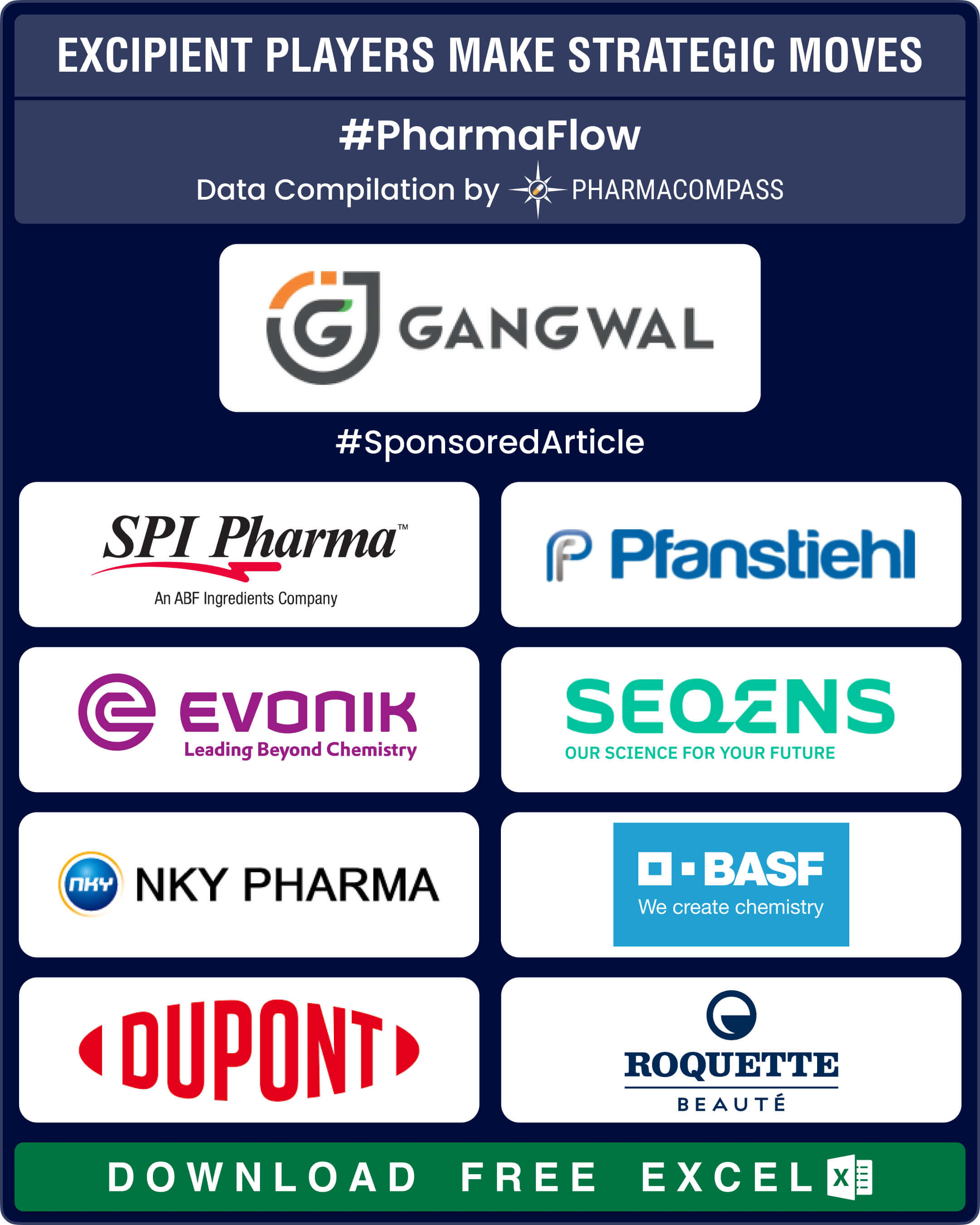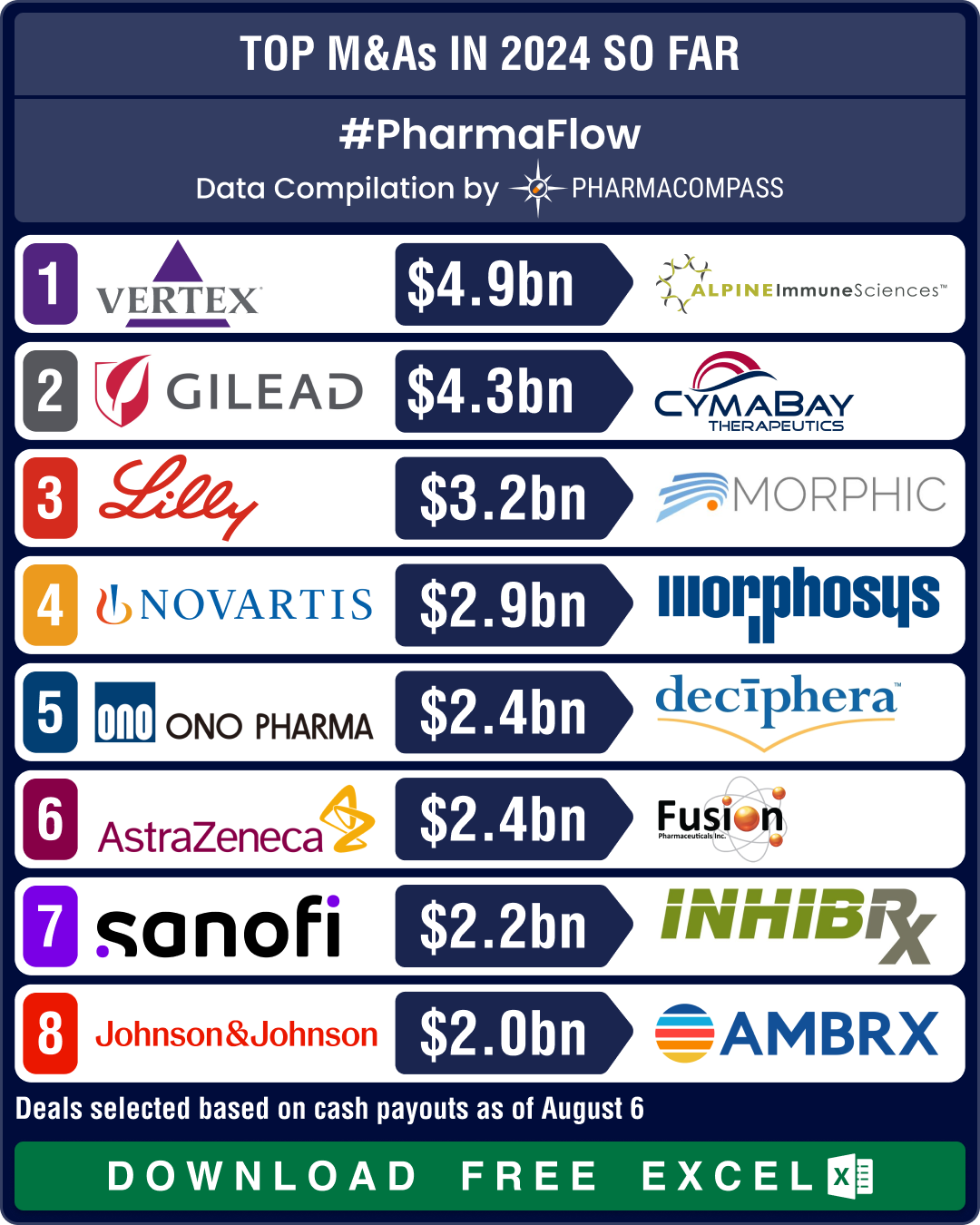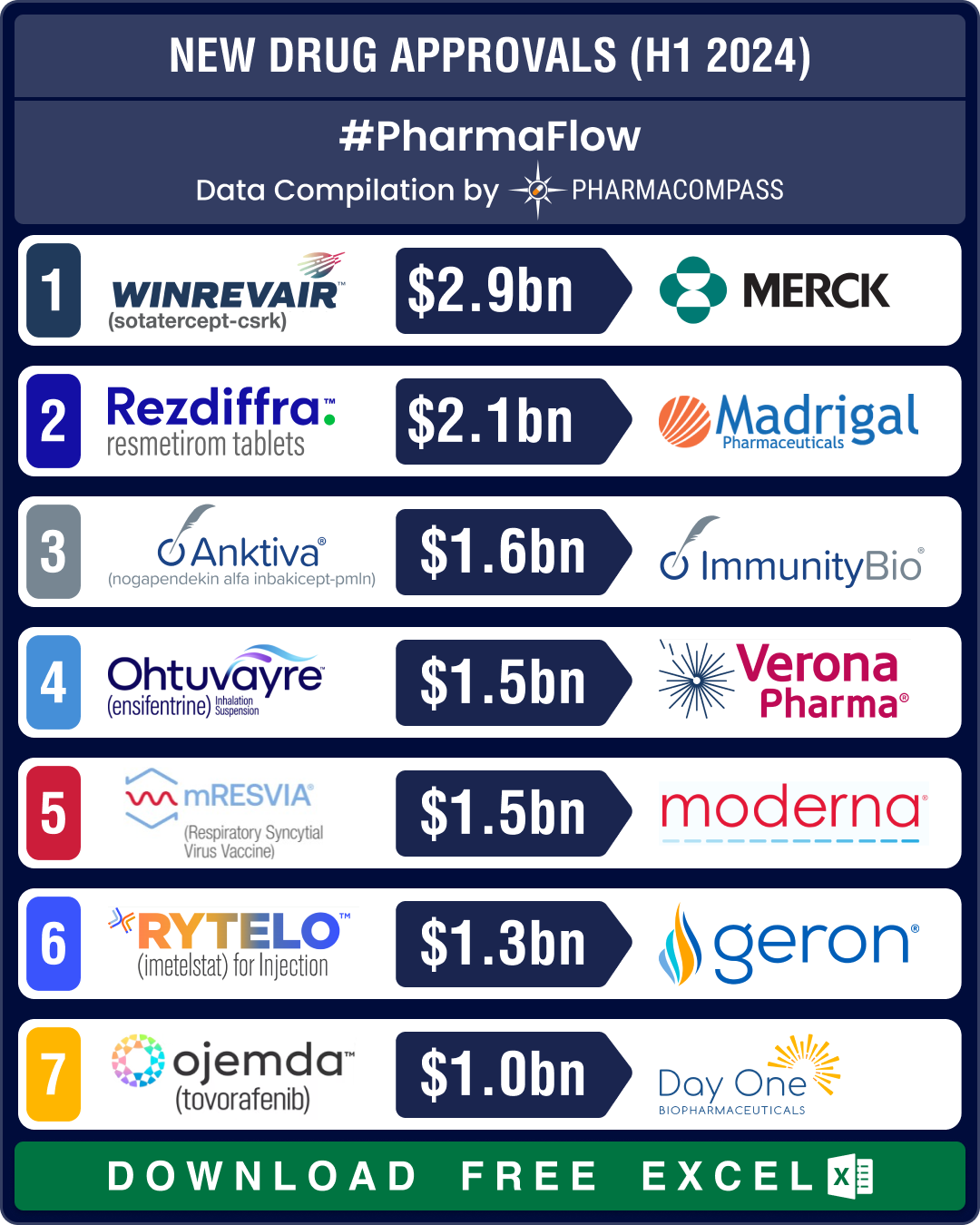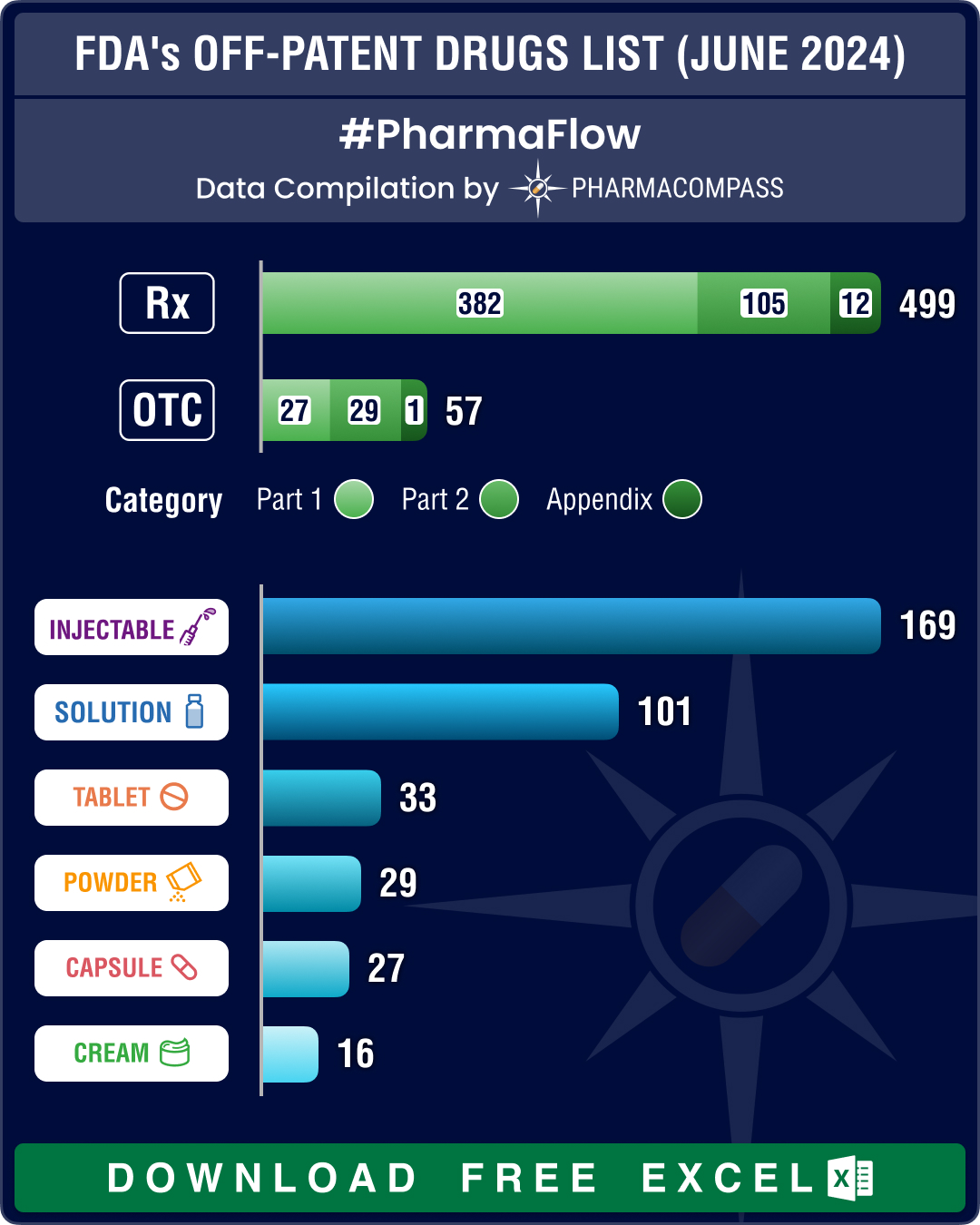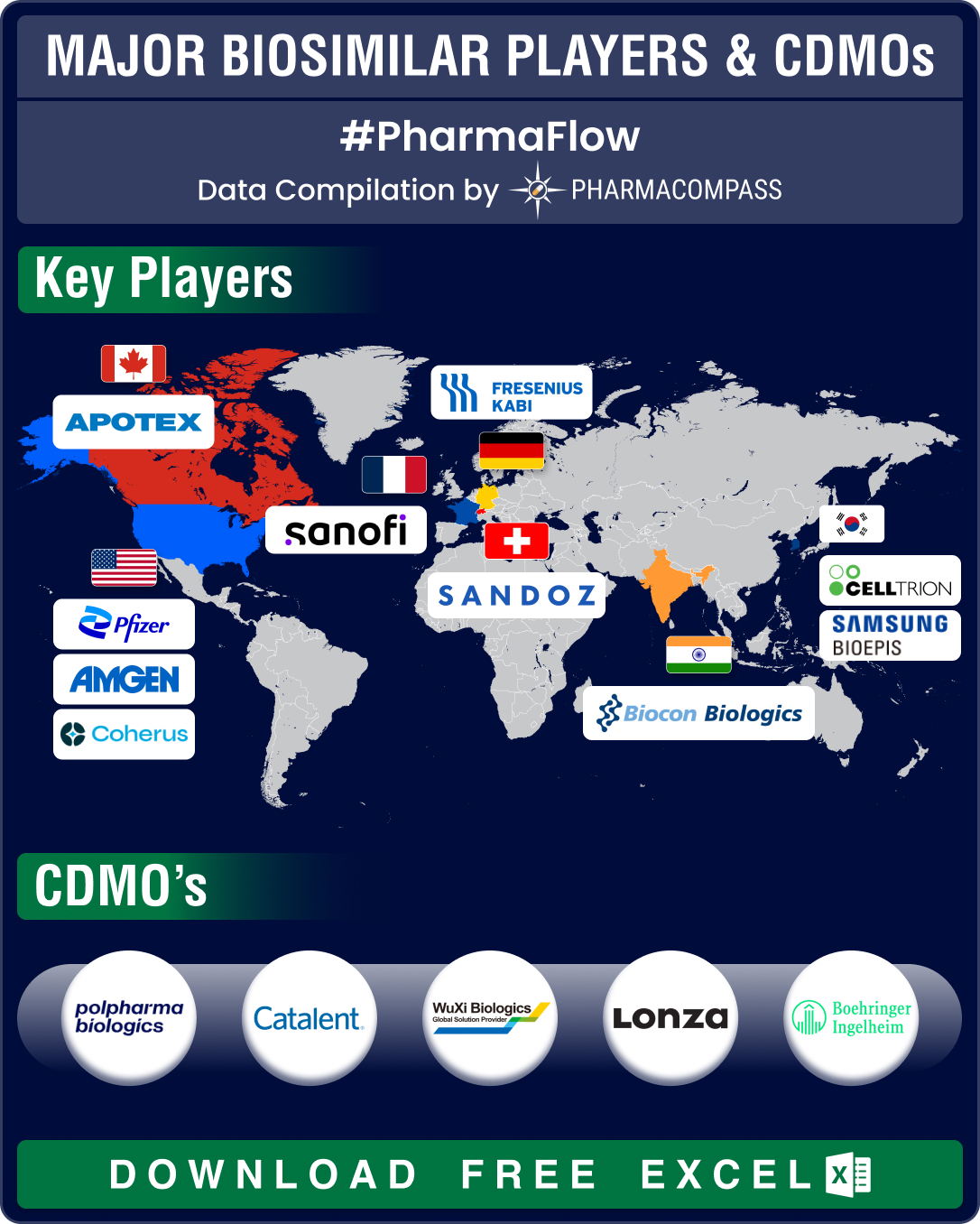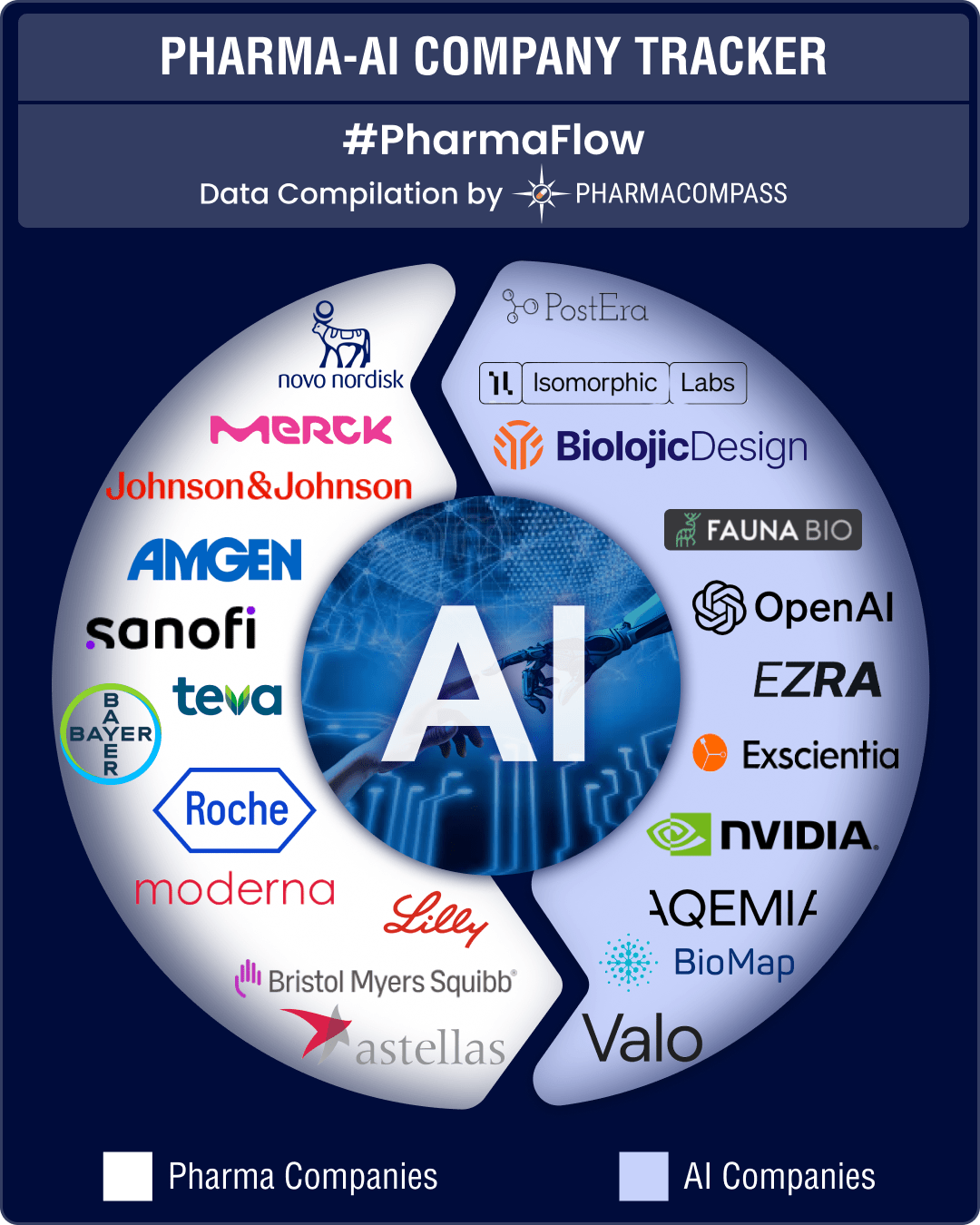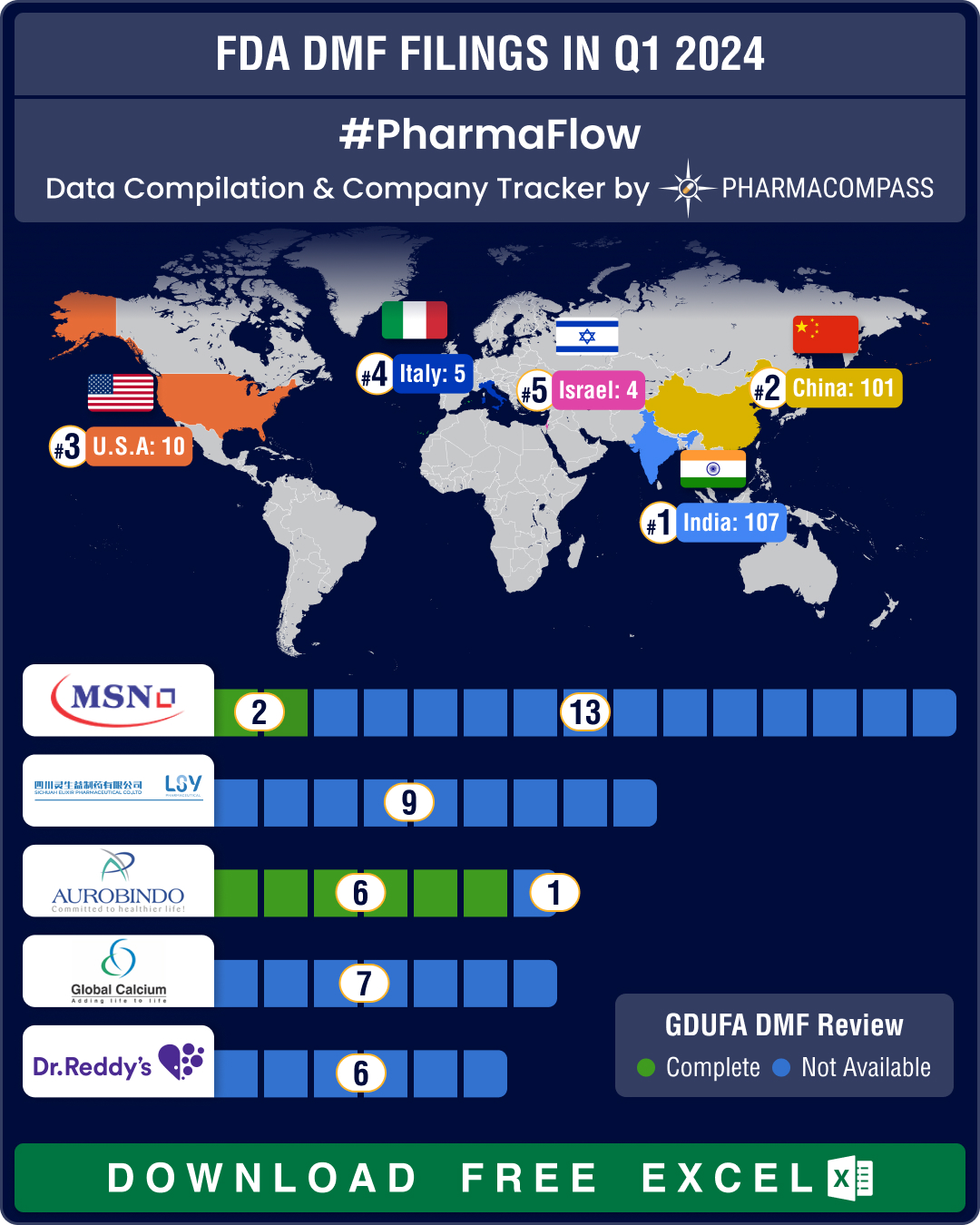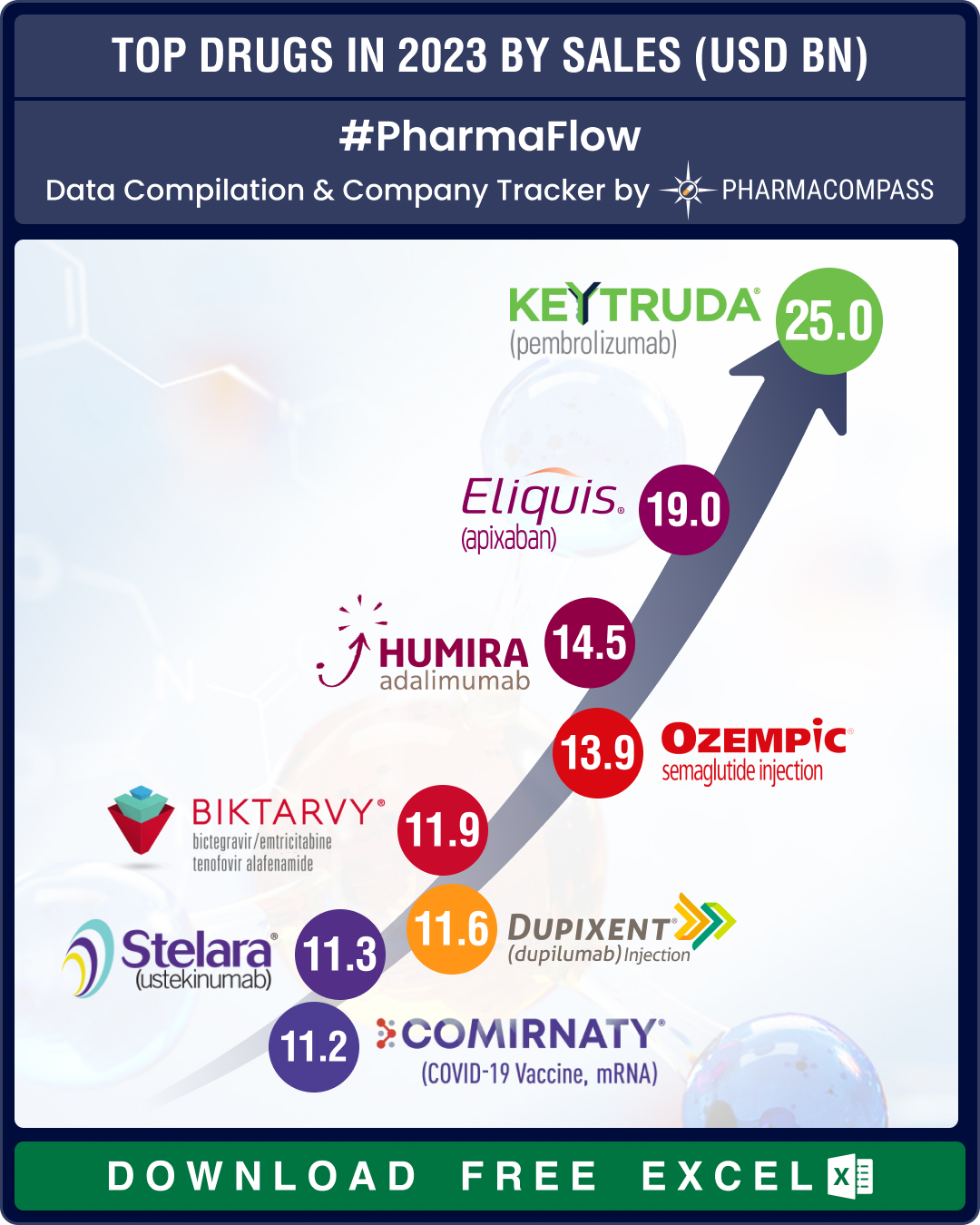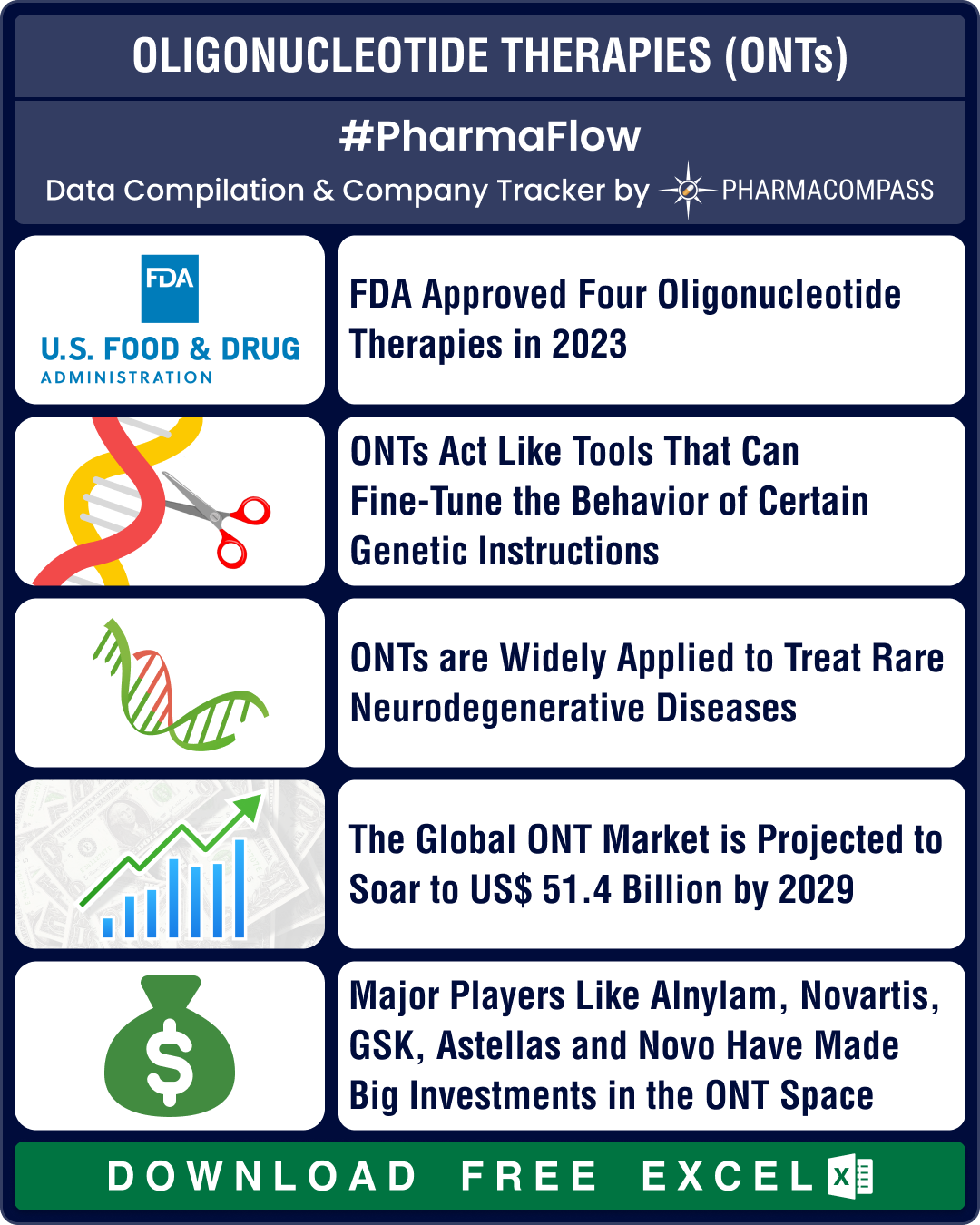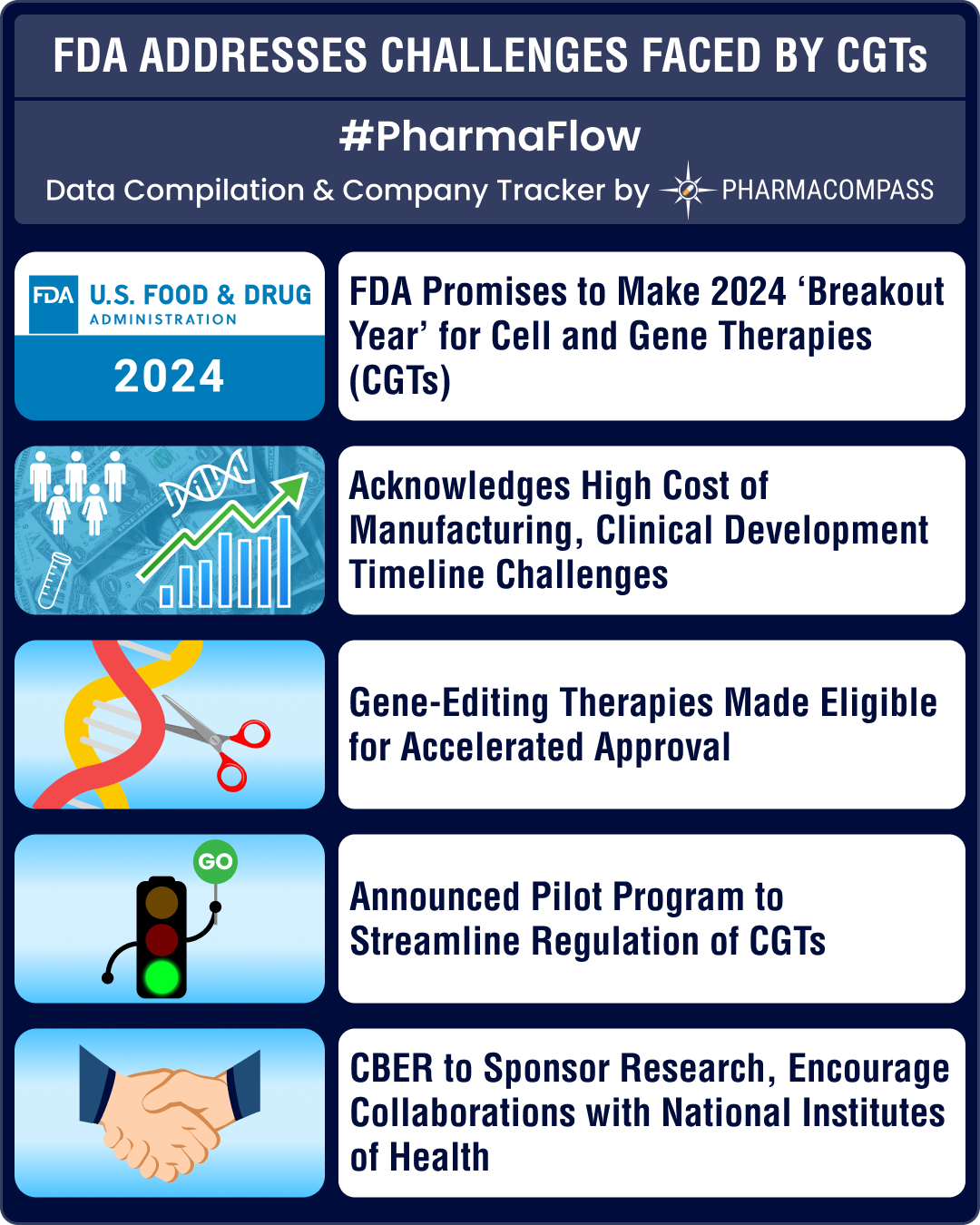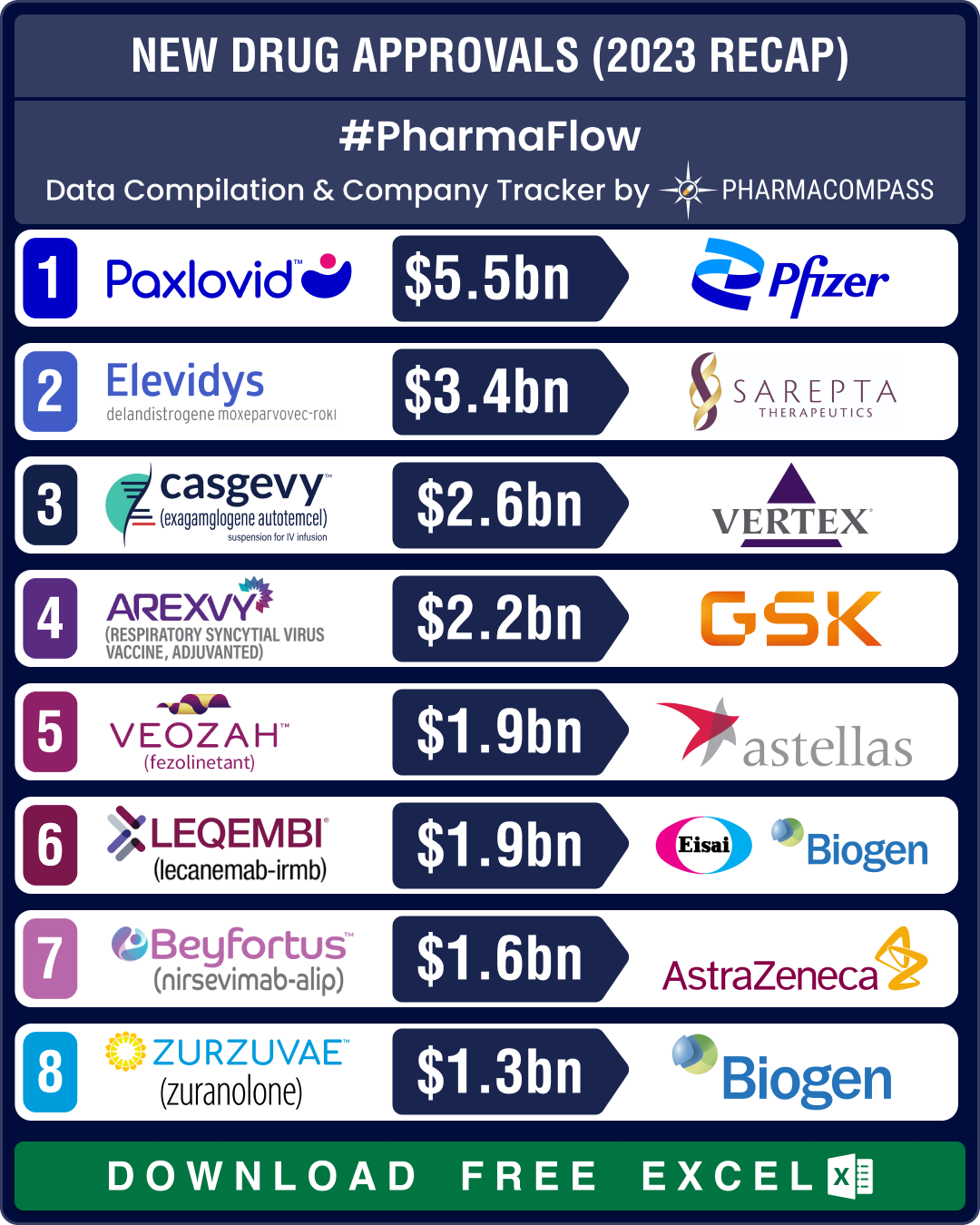Data Compilation #PharmaFlow
CDMO Activity Tracker: Axplora enhances ADC capacities, Quotient beefs up HPAPI capabilities; Evonik, EUROAPI forge deals
The contract development and
manufacturing organization (CDMO) sector witnessed significant activit
Molecular glue degraders: Lilly, AbbVie sign billion-dollar deals; BMS leads with three late-stage drugs
This week, we delve into molecular glue degraders (MGDs), one of the most promising frontiers in dru
AI drug discovery market to grow 30% CAGR, to reach US$ 35 bn by 2034; Novo, Lilly, BMS forge deals
Artificial intelligence (AI) is emerging
as a transformative force in drug discovery and developmen
Top first-in-class drug candidates of 2025: Ionis’ donidalorsen, Sanofi’s fitusiran, Cytokinetics’ aficamten await FDA approval
First‑in‑class drugs are therapies with entirely new approaches that improve patient out
FDA’s first generic approvals slump 21% in 2024; Novartis’ top seller Entresto, cancer blockbuster Tasigna lead 2024 patent cliff
A watershed moment in the journey of a drug is when it transitions from being a patented, high‐
FDA okays 50 new drugs in 2024; BMS’ Cobenfy, Lilly’s Kisunla lead pack of breakthrough therapies
In 2024, the biopharma industry continued to advance on its robust trajectory of innovation. Though
BMS, J&J, Bayer lead 25,000+ pharma layoffs in 2024; Amylyx, FibroGen, Kronos Bio hit by trial failures, cash crunch
Since 2022, there has been a significant surge in layoffs by pharmaceutical and biotech companies. W
FDA’s landmark approvals of BMS’ schizo med, Madrigal’s MASH drug, US$ 16.5 bn Catalent buyout make it to top 10 news of 2024
The year 2024 was marked by some landmark drug approvals in the areas of schizophrenia, metabolic dy
CDMO Activity Tracker: Bora, PolPharma make acquisitions; Evonik, EUROAPI, Porton announce technological expansions
The contract development and
manufacturing organization (CDMO) space continued to grow at an impres
Chinese FDA-registered generic facilities gain steam, India maintains lead with 396 facilities
Every year, the US Food and Drug Administration (FDA) publishes the user fee amounts it will collect
Medical Breakthroughs in 2024: Alzheimer’s, schizophrenia, COPD, MASH see pathbreaking treatments
This year has seen pivotal advancements in medical innovation. The US Food and Drug Administration (
DMF filings hit all-time high in Q3 2024; China tops list with 58% increase in Type II submissions
Drug Master Files, or DMFs, are confidential documents that play a crucial role in the pharmaceutica
US, Europe turn to advanced manufacturing, stockpiling to strengthen drug supply chains
Over the last few decades, the United States and Europe have saved trillions of dollars by importing
2024 US Elections: Harris, Trump differ on abortion rights, ACA, public health spends; agree on need to cut drug prices
The US is in the
midst of yet another, or perhaps the most, polarizing Presidential election.
The
BMS, Bayer, Takeda, Pfizer downsize to combat cost pressures, meet restructuring plans
Over
the last two years, there has been a significant surge in layoffs by
pharmaceutical and biote
Excipient Market Overview: Roquette, Seqens, Evonik make strategic moves; new guidelines deal with contamination
The pharmaceutical industry has long recognized the critical role
excipients or inactive ingredient
US drug shortages hit record high in Q1 2024, impacts cancer, ADHD drugs; Lilly, Novo ramp up production
Drug shortages are threatening healthcare systems the world over.
Be it the US, Canada, Europe or A
Novartis, GSK, Sanofi, BMS shell out over US$ 10 bn in dealmaking, as mid-size deals take centerstage in 2024
The world of pharmaceuticals and biotechnology continued to evolve
this year with strategic allianc
CDMO Activity Tracker: Novo’s parent buys Catalent for US$ 16.5 bn; Fujifilm, Merck KGaA, Axplora expand capabilities
During the first half (H1) of 2024, the global contract development and manufacturing organization (
FDA approvals slump 19% in H1 2024; NASH, COPD, PAH get new treatment options
The first half of 2024 saw a significant slowdown in approvals of new drugs and biologics by the US
FDA’s June 2024 list of off-patent, off-exclusivity drugs sees rise in cancer, HIV treatments
This week PharmaCompass brings to you key highlights of the US Food and Drug Administration’s
FDA approves record eight biosimilars in H1 2024; okays first interchangeable biosimilars for Eylea
Biologics, or complex drugs that are derived from living organisms, have revolutionized treatment of
Big Pharma bets big on AI’s US$ 148 bn potential to revolutionize healthcare industry
Artificial intelligence (AI) is changing the world and bringing
efficiencies across all industries.
DMF submissions from China jump 42% as India continues to top list in Q1 2024
Generic drugs play a crucial role in providing access to life-saving drugs at affordable prices. To
Top Pharma Companies & Drugs in 2023: Merck’s Keytruda emerges as top-selling drug; Novo, Lilly sales skyrocket
The pharma industry clearly recalibrated itself in 2023, turning its focus away from Covid and onto
FDA approves four oligonucleotide therapies in 2023; Novartis, GSK, Novo bet big
In the intricate world of molecular biology, oligonucleotides stand out as versatile, powerful molec
FDA steps in to address challenges faced by cell and gene therapies
The year 2023 was a rather
tough one for cell and gene therapy (CGT) companies. There was news abou


 Market Place
Market Place Sourcing Support
Sourcing Support
